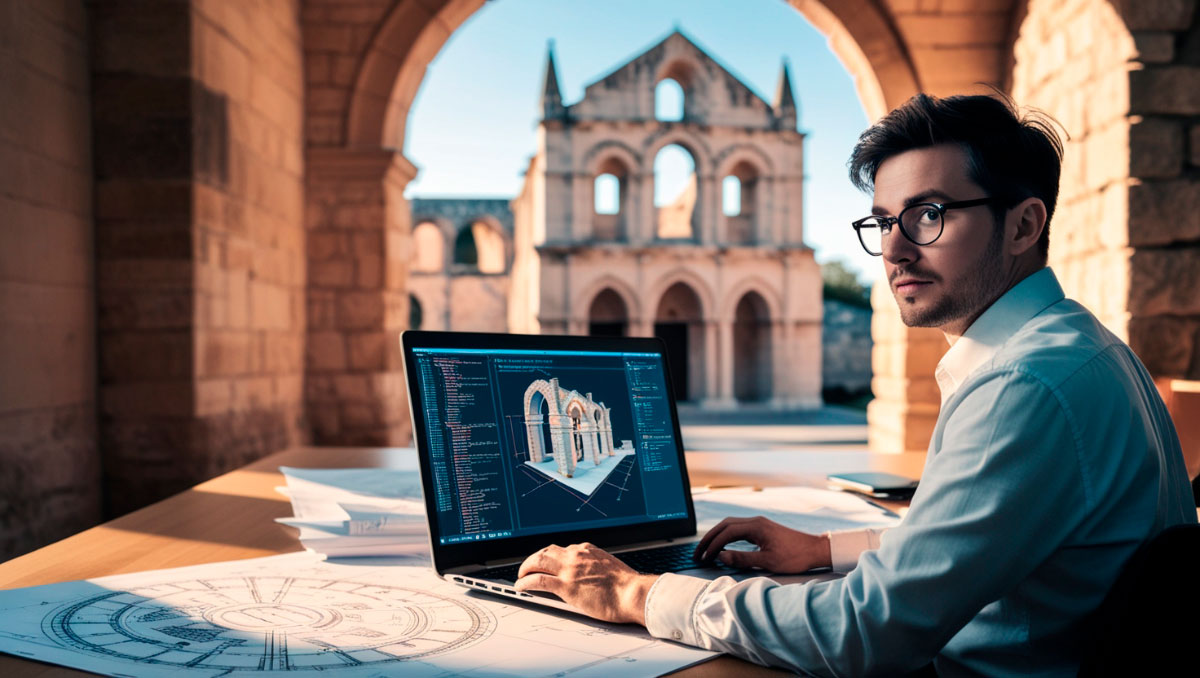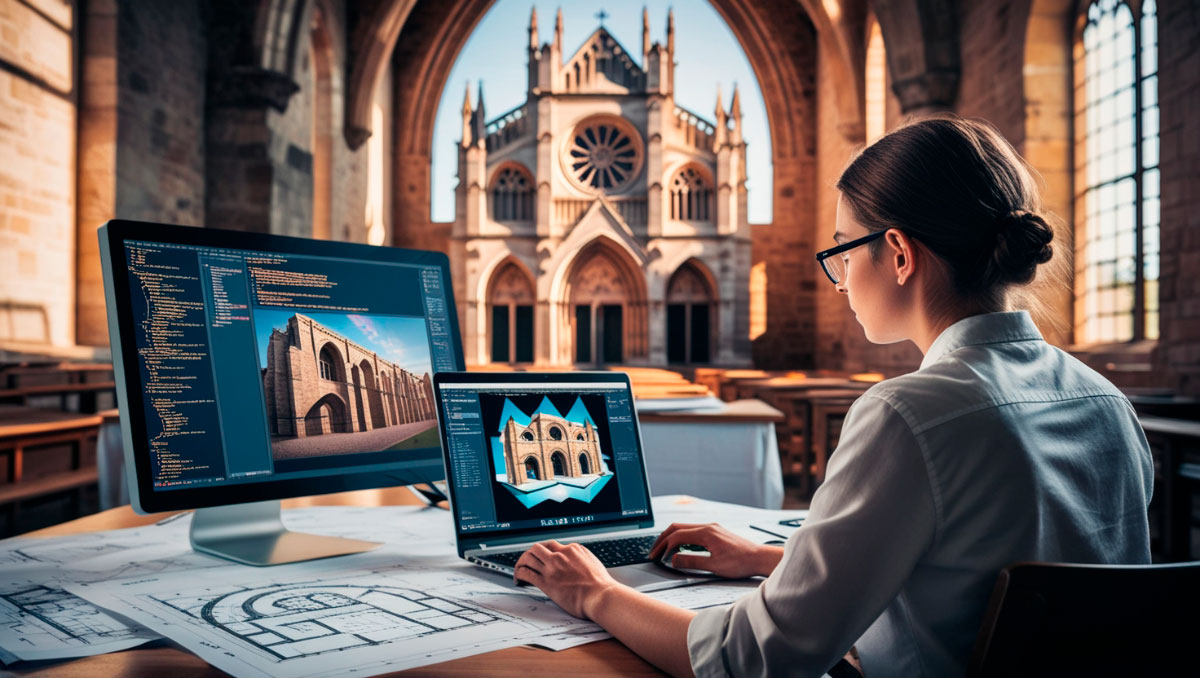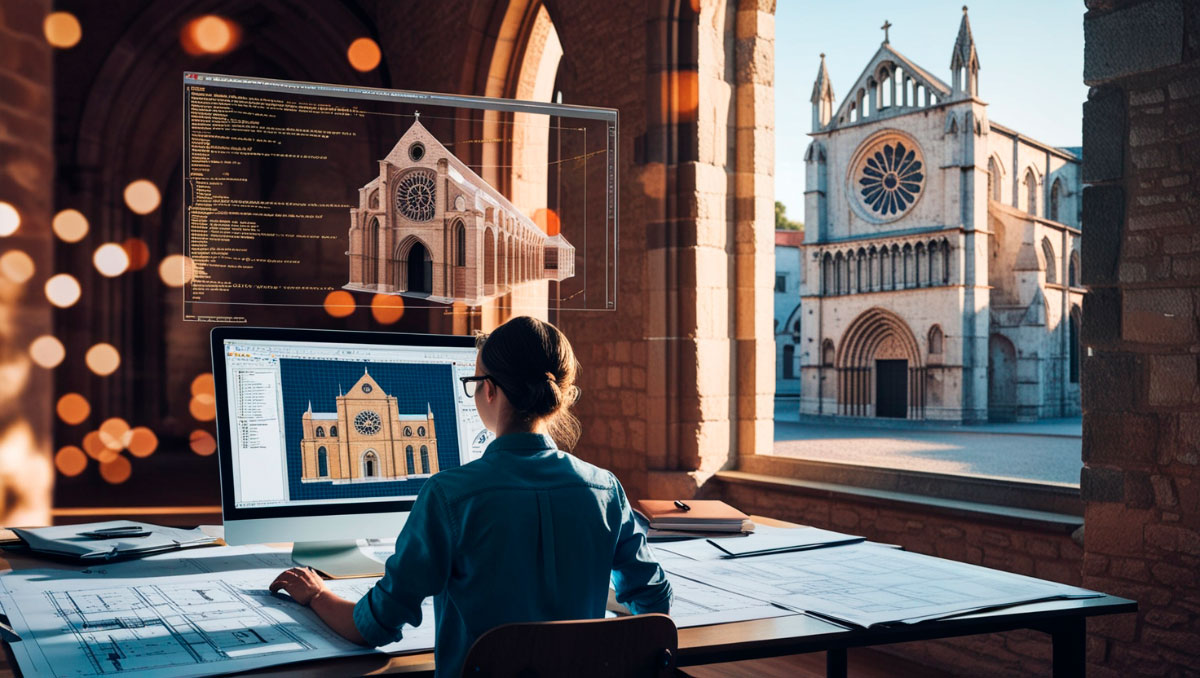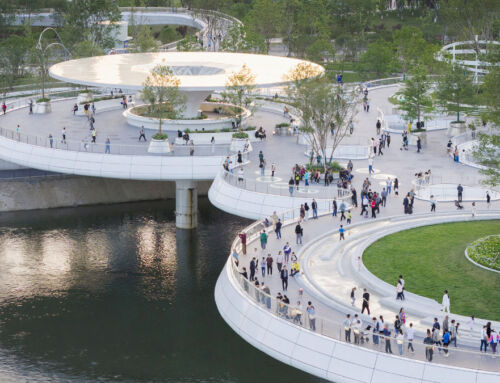In the delicate field of heritage restoration, where every decision must balance intervention and preservation, Heritage Building Information Modelling (HBIM) is emerging as a transformative technology. This specific adaptation of the BIM (Building Information Modelling) methodology to historic buildings goes beyond simple 3D modelling: it builds a digital system that integrates geometry, material composition, historical data and state of conservation into a single intelligent platform.
HBIM’s accuracy is achieved through reality capture technologies such as terrestrial laser scanners and ultra-high resolution photogrammetry, capable of documenting even micro-cracks in a century-old wall. Projects such as the digitisation of Notre-Dame Cathedral after the 2019 fire demonstrated how these models allow for faithful reconstructions, even when parts of the building have disappeared.

But the real qualitative leap comes with artificial intelligence. Continuous monitoring systems, equipped with IoT (or Internet of Things) sensor networks, transform historic buildings into ‘living organisms’ that report their status in real time.
The RePAIR project, which is being implemented in Pompeii, uses robots with machine-learning algorithms to recompose fragmented frescoes. They analyse thousands of possible combinations in hours, when months of manual work were previously required. Simultaneously, predictive models trained on historical climate data anticipate how climate change will affect iconic buildings.

These technologies pose a paradigm shift in conservation: from a reactive approach to a preventive model. Platforms such as Arches, developed by the Getty Conservation Institute, make it possible to manage global heritage networks through HBIM systems and share knowledge between institutions.
The future of heritage conservation will necessarily be hybrid: the restorer’s chisel will dialogue with predictive algorithms and the historian’s intuition will be complemented by the precision of digital twins. As the reconstruction of the Palmyra arch using 3D printing in London demonstrated, technology does not replace authenticity, but it can be its best ally when the original no longer exists.

By David Gonzalez Molina, BIM Manager in the Architecture Department at Amusement Logic






